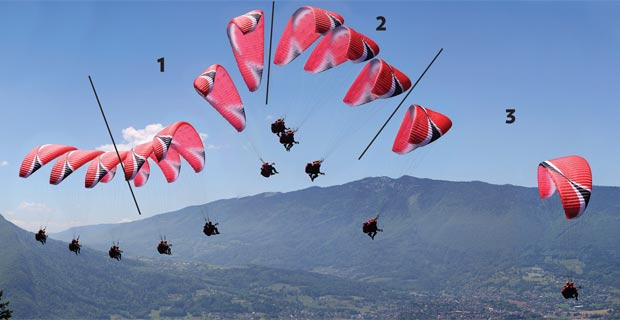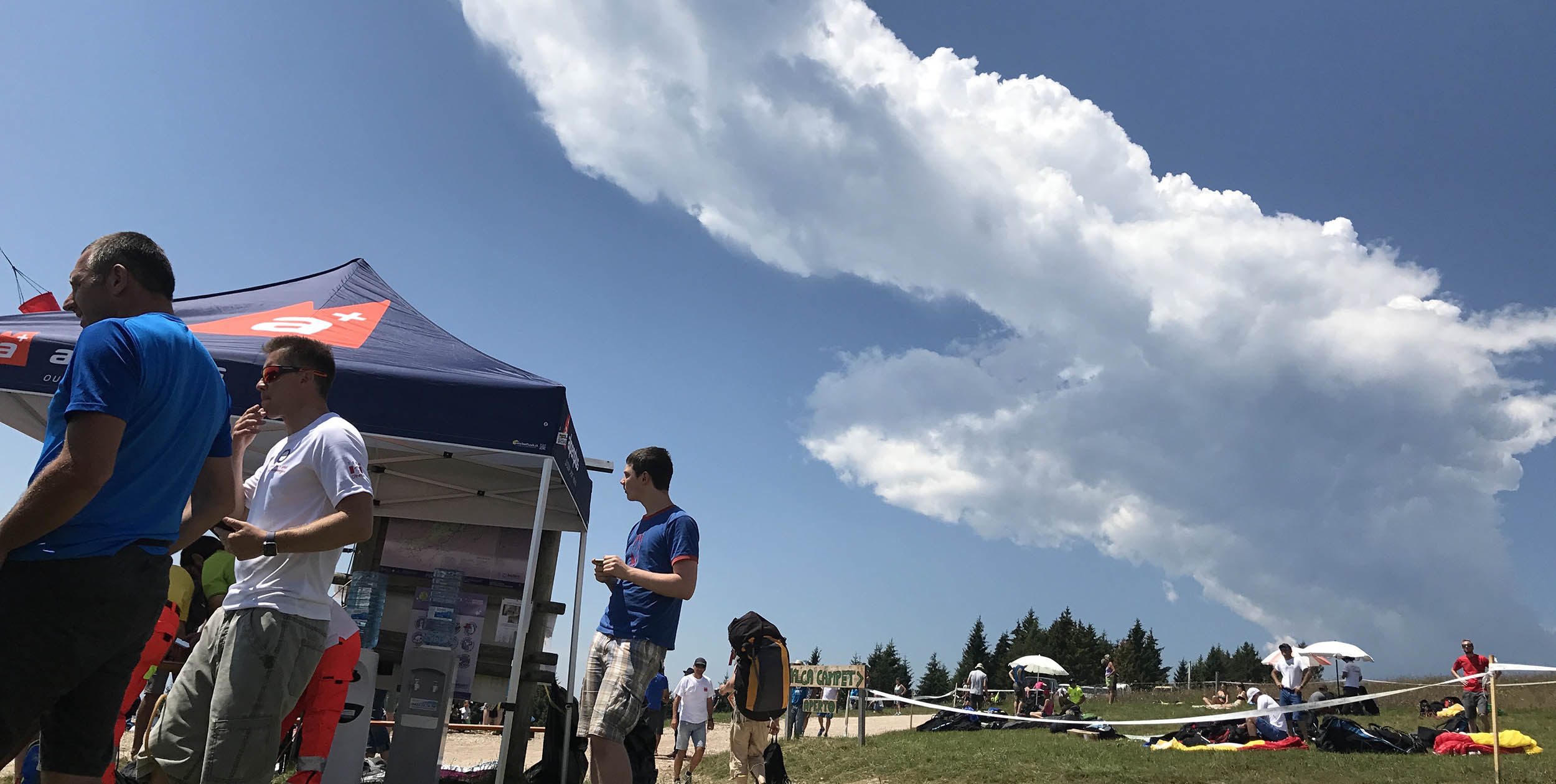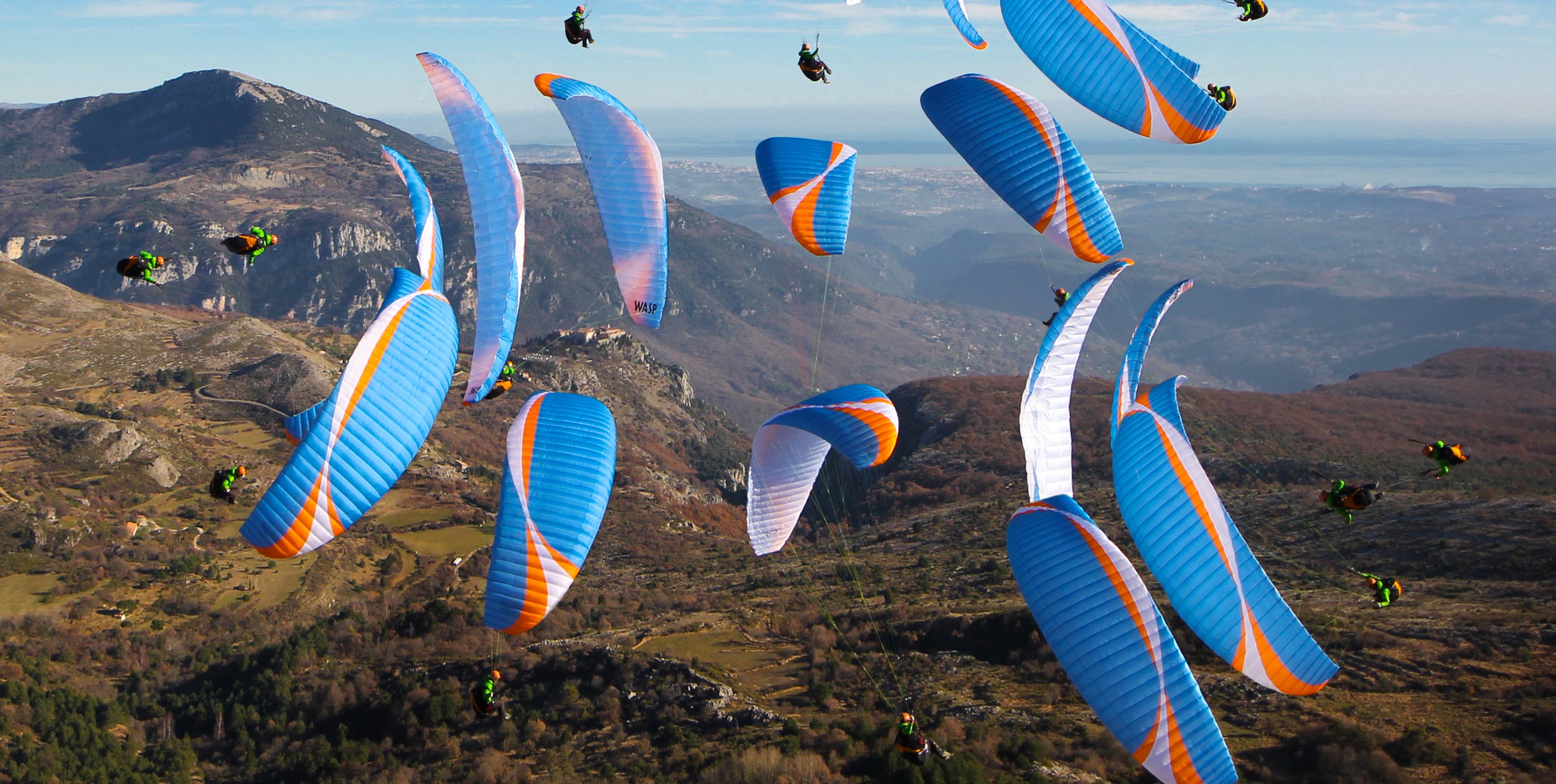This is an edited extract from Fifty Ways to Fly Better, by Bruce Goldsmith
When you fly your paraglider, you sit in your harness at least seven metres below the wing – maybe as much as ten. This means that you are the weight of a huge pendulum. A large part of becoming a good pilot is learning to use this pendulum to your advantage and not allowing yourself to be thrown around by your own inertia or your glider.
Pilot-induced collapses
Controlling the pendulum effect is an essential part of flying safely. In extreme cases, failure to control it correctly can cause the wing to collapse, even in completely calm conditions. Many pilots believe that collapses come from turbulence, but some are directly caused by the pilot not controlling the pitching of the wing correctly.
I have often seen this when pilots first try to learn wingovers. If the movement of the wing is not timed correctly with the swinging of the pilot, the wing can get unloaded as it swings down when the pilot is still going up.
When pilots are under training this does not usually cause problems because they should have been taught to expect the effect and how to handle it. However, a similar situation can occur when they start to venture into thermic air and the wing surges forwards and backwards.
This can catch you out if you are not used to controlling the swing as the wing pitches.
Learning the swing
If you just fly around carefully keeping the wing stable over your head you will never get accustomed to the way your glider swings in pitch or roll. Imagine a child sitting on a swing without it ever moving. Suddenly someone pushes the swing! The child will feel scared and disoriented, and may well fall off. However, a child who is used to swinging will be completely at home and be able to control it with body and legs.
Let’s compare this to our pilot who flies around carefully keeping the glider stable overhead. Then the glider meets a thermal, and pitches and the swing starts. If you have never swung around on your glider your reactions may not cope with this situation.
When you enter, the glider will first pitch back and then forwards again. If this coincides with the other side of the thermal, then if your reactions are wrong, the wing may well collapse, even though the thermal itself was not turbulent. Learning the swing, therefore, is an essential part of becoming a good pilot.
The pitching game
Start with pitching exercises on your glider. This is pretty safe and can be practised any time you go flying and get a reasonable amount of ground clearance – at least 200m (650ft). Warning: only do this in calm conditions.
Fly straight and level and simultaneously apply both brakes to slow the glider down. Just pull them 20cm or so at first. Then release both brakes quickly and the glider will surge forward in front of you. You will then swing forward to follow the glider; as you do so you gently apply the brakes again. In this way you can get into a pitch oscillation and it can really be quite a fun game.
You can play around with the timing and amplitude of the swinging so that you train your reactions to understand the movements of the glider. Start slowly and gently at first and then as you get more and more confident let the glider go further and further in front of you. It is amazing how far in front of you it is possible to let it go before you get a front collapse.
Be careful though: do not let the glider surge lower than about 45-degrees to the horizon. It is important to get used to starting and stopping the oscillation quickly and safely at will. The difference between getting it to start or stop swinging is just in the timing of the brake application. This is why practice is the only solution.
To see more of what’s in the book see:
How to fly XC on an EN-A paraglider
Rear-riser control and how to use it
Thermalling techniques: classic and turn-reversal
How to climb faster in thermals









